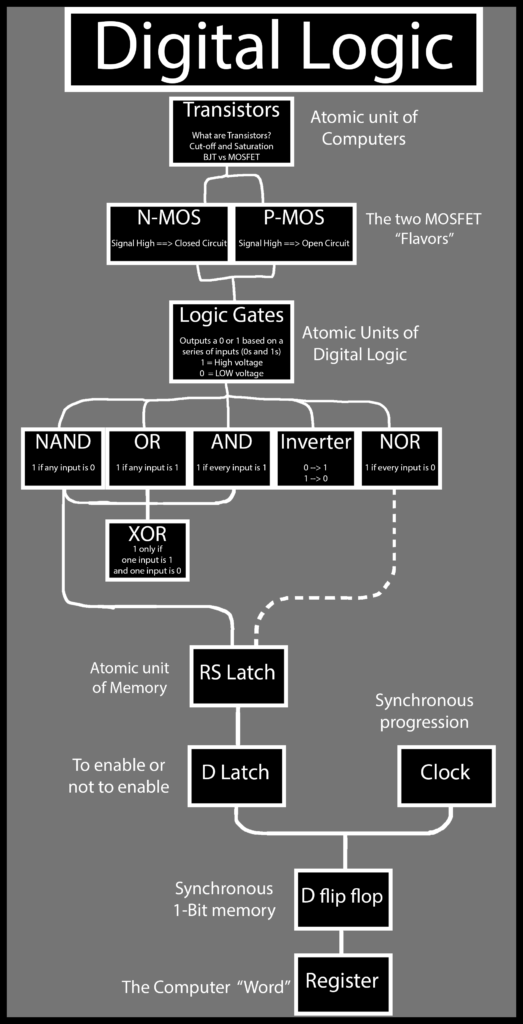From Transistors to Digital Logic
Prerequisites

Course Breakdown
During this course, we will be covering several topics, starting at the root of digital computing: the Transistor. The full breakdown of the topics is shown below:

You may notice that this breakdown strongly resembles a family tree of sorts. That is because it is! We will look at each of these boxed topics thoroughly. But our goal for this course is that you see how each topic contributes to the next.
There are many excellent content creators who teach transistor and digital logic. Ben Eater is an prime example of someone who performs hands-on experiments to bring theories to life.
In this course, however, we will be building on top of hands-on experimentation with two key objectives:
First, we want to provide tools that produce reproducible, quantitative results. Students should be able to collect data and deduce a pattern from it. Students can learn best when they perform the experiments themselves and can prove the laws of nature inductively.
Second, we seek to make a visual and hierarchical representation of these concepts. When we start teaching about transistors, we show all the connections that go on within a transistor. Then, we move up a level and focus on how transistors connect to each other to make our logic gates, as seen in our logic gate PCBs. We continue this abstraction with PCBs that show how logic gates can connect with each other to store memory.
We have yet to see any other teaching company use this sense of hierarchy and abstraction when performing experiments with digital logic circuits. Once a lower-level concept is covered, we want students to be able to zoom out and see the bigger picture.
That is what we want to accomplish with this course on digital logic. Without further ado, let’s begin!
